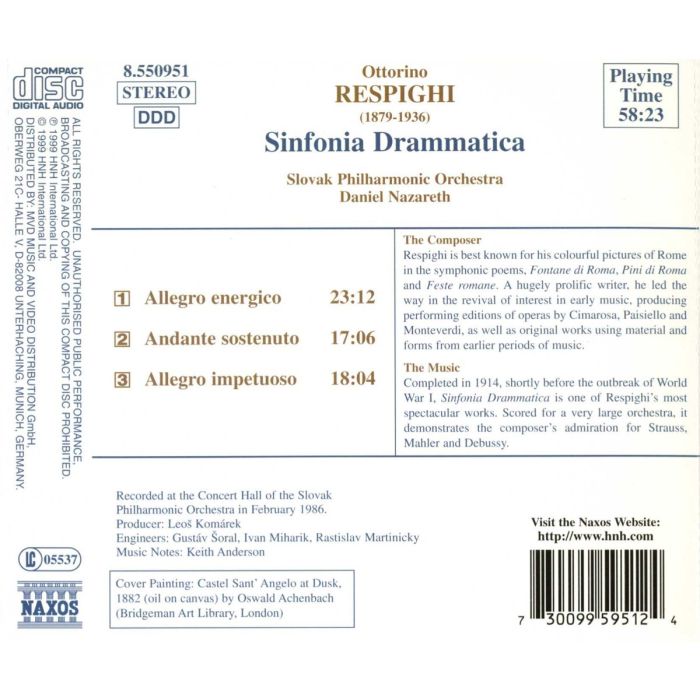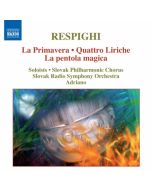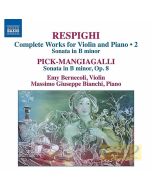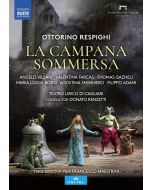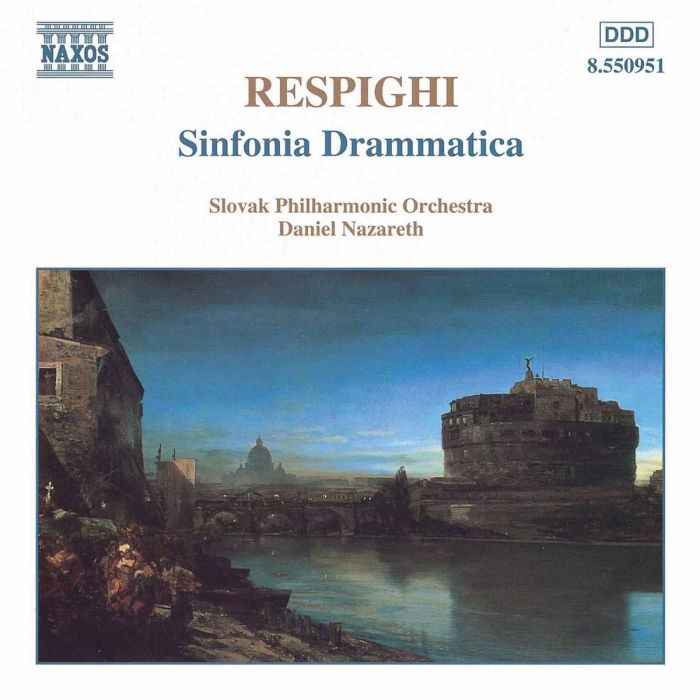
(Produkt nie został jeszcze oceniony)
kompozytor
Respighi, Ottorino
tytuł
RESPIGHI: Sinfonia Drammatica
wykonawcy
Nazareth, Daniel, Slovak Philharmonic Orchestra
nr katalogowy
8.550951
opis
Respighi's Sinfonia Drammatica was completed in 1914. It is a substantial work that has been regarded by some as a further example of Respighi's early eclecticism. The dramatic mood is established at once as the orchestra launches into music that may at times remind us of Mahler, particularly in elements of orchestration and lyrical melancholy. Richard Strauss was, of course, a strong influence in this earlier period of the composer's life, if not the most immediately apparent here, except, perhaps, in the scale of the symphony and its occasional extravagance of orchestral effect. The second movement might suggest the influence of Debussy, in mood and idiom, with an interlude of solemn medievasism, leading to dramatic intensity, which is then replaced by are turn to the initial tranquillity, disturbed briefly once again before final serenity is restored. The final Allegro impetuoso unleashes powerful forces that offer a bewildering variety of mood and incident, making full use of orchestra colour that does everything to justify the title of the work.
nośnik
CD x 1
wydawca
Naxos
data wydania
12.04.1999
EAN / kod kreskowy
730099595124
58,00 zł
Produkt na zamówienie
Wysyłka ustalana indywidualnie.
Darmowa wysyłka dla zamówień powyżej 300 zł!
Darmowy kurier dla zamówień powyżej 500 zł!
sprawdź koszty wysyłki